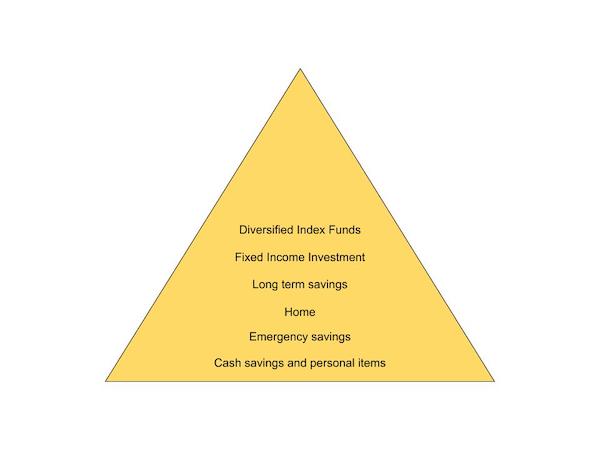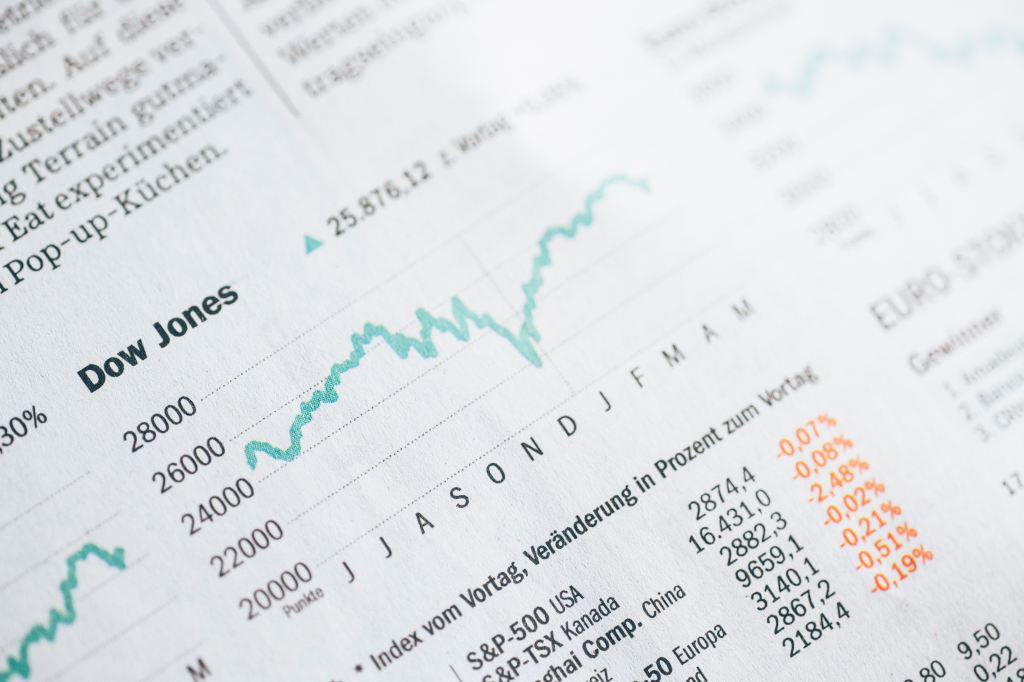
The 6th layer of your Asset Allocation model is to invest in diversified index funds (read: these are NOT unit trusts) in the form of Exchange Traded Funds (ETFs). ETFs are all the rage today in the developed markets and there are almost 2,000 of such funds available in the US linked to over $3 trillion in assets. The key allure of ETFs is its simplicity and low costs – something that really suits the average Joe who does not fully understand the finance world and lacks the necessary skills to pick stocks or unit trusts to invest in.
A broad and simple index based ETF is therefore, in my view, the safest way for a person to get started in stocks investment. This doesn’t mean that the person will get super rich through ETFs, but it means that in the long run (say 10-20 years) that person has a very good chance of beating inflation, FD rates and, with the right ETFs, even the EPF’s and average unit trust returns.
What is an ETF?
An ETF is quite similar to a unit trust in that it’s a pool of money used to buy a large selection of stocks to even out the risks associated with the stock market.
With unit trusts, you pay a fund manager to pick the stocks for you. He or she will research the companies and then buy the stocks of the companies on your behalf. In essence, you outsource all the thinking and decision making to the fund manager. In return you pay the fund manager a yearly fee, which in Malaysia, is around 1.5% of the current value of your investment with the fund manager. Since the 10 year median return of Malaysian equity unit trusts is currently 4.8%, this works out to be a 31% guaranteed profit margin for the fund manager. You pay this fee even if you are losing money on your unit trust. Also this means that the 10 year median returns of these unit trusts is just 3.3% after you have deducted the yearly fee.
With an ETF, there is still a fund manager. However the fee that you pay an ETF fund manager in Malaysia is just around 0.5% of the value of your investment each year. This is 67% discount in fees is only possible because the fund manager doesn’t have to research anything about the companies. He or she buys the stock of companies based on the composition of an index that the ETF tracks.
As an illustration, the FBM KLCI index is comprised of the 30 largest listed companies in KLSE. The index itself is a number that reflects the weighted average of the current worth of these 30 companies. Below are the weights of the top 5 companies in the FBM KLCI index as of the end of June 2019:
| Public Bank | Tenaga | Maybank | CIMB | Petronas Chemicals |
| 13.52% | 10.26% | 9.94% | 7.00% | 4.51% |
The fund manager for an ETF that is tracking the FBM KLCI, will take the pool money and use it to buy the stocks of these 30 companies in the same proportion as these weightage. That means over 13% of the money will be used to purchase Public Bank stocks, 10% of the money for Tenaga stocks and so forth.
Purchasing the stocks by following the composition of an index results in a fund performance that mimics the performance of the index. The 10-year average performance of the KLCI is currently 2.6% (which is very poor indeed and has been on a decline since April 2018). The 20-year average instead is about 5.7%. An ETF that follows the FBM KLCI, such as this one from AmBank, will therefore provide similar returns.
Buying an ETF that is based on US stocks

There is nothing wrong buying Malaysian stocks but why limit yourself to just Malaysia? Even the EPF has gone overseas to get better returns for its investments. And it is true that not all stock markets are the same. Most of the stock market growth in the last decade happened in the US stock market with companies like Microsoft, Amazon, Alphabet and Facebook. It would be a pity to miss out from gaining from their growth.
Since the start of 2019, the KLCI has declined by about 8.1%. At the same time, the S&P 500 index in the US has gained 18.8%. It would have been a lot wiser to have diversified your stock investments to the US stock market.
There are 3 main ways for you to buy US stocks:
- Buying into a unit trust that buys US stocks. Unfortunately there are very little of these funds (only 3 out of over 500 funds listed in Fundsupermart are invested in the US) and they all charge an eye watering high annual management fee of at least 1.8% that eat into your returns.
- Directly buying the US stocks via a local brokerage account that also allows foreign share trading. Unfortunately, unless you place very big trades (eg >RM10,000 each trade), you pay quite a lot in brokerage fees as generally they charge a trading fee between USD20-50 for each trade (!!!).
- Buying the MyETF Dow Jones US Titans 50 ETF (Stock code 0827EA) that is listed on KLSE but based on a US stocks index that tracks the largest 50 companies on the NYSE and Nasdaq. You only pay standard brokerage fees (Rakuten Trade just charges RM7 for trades below RM1,000) and the annual ETF fee is 0.475% of your total investment value.
The third option above is the cheapest way for an average Malaysian to diversity into the US stock market. The returns of this ETF since the start of 2019 is 16.6% which is close to the performance of the S&P 500. And with the low cost of the ETF, you get to keep most of the returns to yourself instead of paying to the fund manager.
The current price per share of this ETF is just USD1.11. With a minimum purchase of 100 shares per lot, this means that a Malaysian can buy this ETF with as little as over RM465, based on the exchange rate of RM4.19 for each USD1.00 (RM472 if you include the RM7 brokerage fee of Rakuten Trade). This makes it totally doable for an average Malaysian to regularly invest in US stocks on a monthly basis.
Below are the top 10 companies being held by this ETF as of 10th October 2019. These are all well-known companies with strong ‘moats’!
- Microsoft Corp (9.9%)
- Apple Inc (9.8%)
- Facebook Inc Class A shares (4.3%)
- Alphabet Inc Class A shares (3.9%)
- Alphabet Inc Class C shares (3.9%)
- Johnson & Johnson (3.5%)
- Visa Inc Class A Shares (3.1%)
- Procter & Gamble Co (3.1%)
- Exxon Mobil Corp (2.9%)
- Home Depot Inc (2.7%)
Of course with any stocks investment, the market can move up or down. The key thing for building wealth is to focus on the long term, eg 15-20 years time period. This kind of time period is long enough to weather the up and down cycles of the stock market. As long as you stay invested, the chances of you losing money at the end of 15 or 20 years is very slim.
So there you go, a very little known fact of how Malaysians can invest in US stocks very cheaply.

The only problem is liquidity. These ETFs are highly illiquid in the Malaysian market.
LikeLike
The daily volume is indeed low for most ETFs in KLSE but let’s spread the word about them as they hardly get any publicity in the general public, especially with the young folks who are just starting to figure out how to save and invest. In theory, there are banks that help to provide liquidity to ETFs when needed and the ETF itself will create additional units when needed. These banks also help to buy up trades when most people are selling, although it is my hope that people try to stay invested for the long haul and not trade in and out of ETFs like normal stocks.
LikeLike
[…] higher risk tolerance, you could also invest in foreign equities directly or through plain vanilla index tracking ETFs. The US stock market for example, out-performs the price appreciation of properties in Malaysia […]
LikeLike